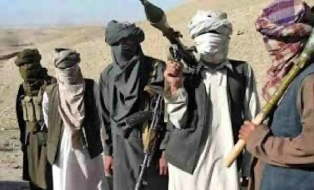Pramode Mallik
What went wrong and why did the relations become so bad and tense that the Afghanistan Taliban attacked several points inside Pakistan in apparent retaliation to the Pakistan Air Force’s attack killing many civilians?
Have the new rulers of the war-ravaged country decided to assert themselves and adopt their policies, independent of Islamabad’s whims?
Is Islamabad frustrated with the Taliban’s refusal to control the Tehreek-e-Taliban Pakistan from attacking security forces in the restive province of Khyber Pakhtoonkwah?
Did Taliban Not Break ‘Shackles Of Slavery’?
When the Taliban captured Kabul in August 2021, driving away US-backed President Ahmed Ghani and his men, Pakistan was so jubilant that its then Prime Minister Imran Khan went to the extent of saying that Afghanistan had broken the “shackles of slavery”.
Besides, Pakistan’s Interior Minister Sheikh Rasheed Ahmed held a press conference at the Torkham crossing with Afghanistan to congratulate the Taliban.
Did Pakistan Save Taliban?
Before that, top leaders of Taliban took shelter in Pakistan, which provided them with arms and ammunition and funded their insurgency for 20 years.
Top leaders, including Mullah Muhammad Omar, the founder of the Taliban movement, studied at Pakistani Islamic religious schools, including the Darul Uloom Haqqania.
Taliban constructed its terror ecosystem after establishing organic relationships with Pakistani society. It enabled them to reorganise and initiate a lethal insurgency that began around 2003.
Taliban fought US-led coalition of more than 40 countries only with the continued assistance of Pakistan, its military, intelligence outfit the ISI and the Pakistani society in general.
Are Taliban Asserting Themselves?
However, as time passed, the Taliban began to assert themselves, follow their independent policies and prove themselves to be not as much cooperative as Islamabad had hoped.
Durand Line, separating Pakistan and Afghanistan, has become an emotive issue and the bone of contention between the two neighbouring countries because it divides Pashtuns on the two sides of the border.
The Durand Line
The current Taliben regime follows the earlier Taliban dispensation of the 1990s, which did not accept the Duran Line. Islamabad considers it as a challenge to the doctrine of ‘strategic depth’ in Afghanistan.
It has resulted in an escalation of tension and firing across the Durand Line many times since the Taliban came to power in 2021.
TTP-Taliban Equation
The success of the Taliban in Afghanistan has encouraged and inspired the Tehreek-e-Taliban Pakistan, which aspires to repeat what happened in the neignbouring country.
The fundamentalist forces have united and attacked security forces in Pakistan, particularly in Khyber Pakhtoonkwa and Balochistan.
Islamabad is also upset with the symbiotic relations between the TTP and Afghan Taliban for years. They have sharing sanctuary, tactics and resources, often in Waziristan and other Pakistani regions bordering Afghanistan.
It is highly unlikely, to the chagrin of Pakistan, that Taliban would accept Islamabad’s demand of taking action against the TTP.
Interestingly, the Taliban has used the same tactics and logic that Pakistan adopted for more than two decades, while supporting it and rejecting the US demands to curb Taliban activities inside on its soil.
Taliban argues that the TTP is the internal problem of Pakistan and Islamabad should handle it on its own.
Pakistan Army Under Pressure
Pakistan Army is under tremendous pressure to punish the TTP, which aspires to establish a Taliban-like regime and set up caliphate or the rule of Sharia in the country.
Pakistan is also under the pressure of its all-weather friend China, which is constructing the China-Pakistan Economic Corridor and many infrastructure projects in the country. Chinese employees deployed in Waziristan have come under attack and many of them have been killed by the TTP insurgents.
Islamabad must act for national and international reasons against its one-time protege.



